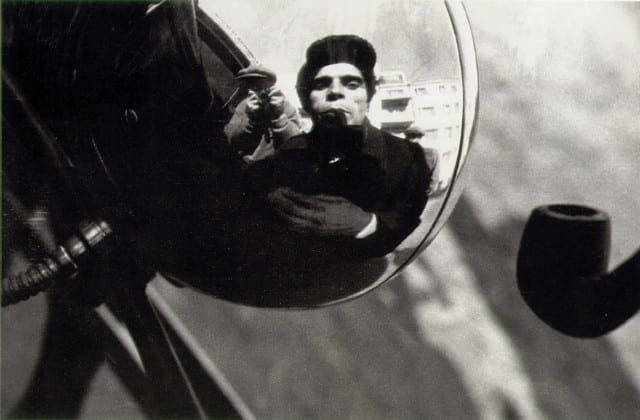Irving Penn, Irving Penn: In a Cracked Mirror, New York, 1986.
“Philippe Halsman: Étonnez-moi!”

Born on 23 November 1891, in Sankt – Petersburg (Russian Empire), in the working-class family, where father worked as a theatre props manager and his mother, as a laundress. From 1907 to 1914, Rodchenko studied painting at the Kazan School of Art. After two years of service in the army, he entered Photographers Union where he worked as a secretary. During that time he practiced painting and design. In 1920 at Institute of Artistic Culture along with architecture Vladimir Tatlin, his wife and artist Varvara Stepanova, artist El Lissitsky and others, developed the main ideas of Constructivist movement. Around 1921, Rodchenko renounced painting to concentrate on design. In 1923 he along Vladimir Maykovasky and several others from Soviet intelligentsia established LEF magazine. At the same time, Rodchenko worked from 1921 to 1932, as a magazine photographer and photographic reporter in Moscow, and at that time he started to experiment with photography. At first, he created black and white documentary-style photo portraits of his friends and colleagues at LEF. In 1923 he started also to practice photomontage and he created several illustrations for LEF along with an illustration of the poem written by his friend and colleague Mayakovsky. Somewhere around 1924 Rodchenko fully embraced photography. After attending Paris International exhibition where he participated and acquired his first 35mm camera in 1925, he produced his first photo series “A House at Myasnitskaya Street” and exhibited it in 1926. That was the first series where he utilised the radical angles that made Rodchenko known today. Eventually one could call his aesthetics as documentary style of photo with stark contrasts of light and shadow, shot from radical angles where compositions were abruptly cropped. Somewhere around 1930 he came under criticism for his lately produced series of “Pioneers” as part of October collective, where he was critiqued for formalist underpinnings. Later on, he produced several other series including the series “USSR in Construction” in 1933 where he documented White Sea Canal construction by prisoners and “enemies of the state”. Later on, from 1942 to 1956, Rodchenko worked as an exhibition designer in Moscow while continuing to produce photographic series until his death in 1956.
If you are interested, feel free to check out the presentation below.